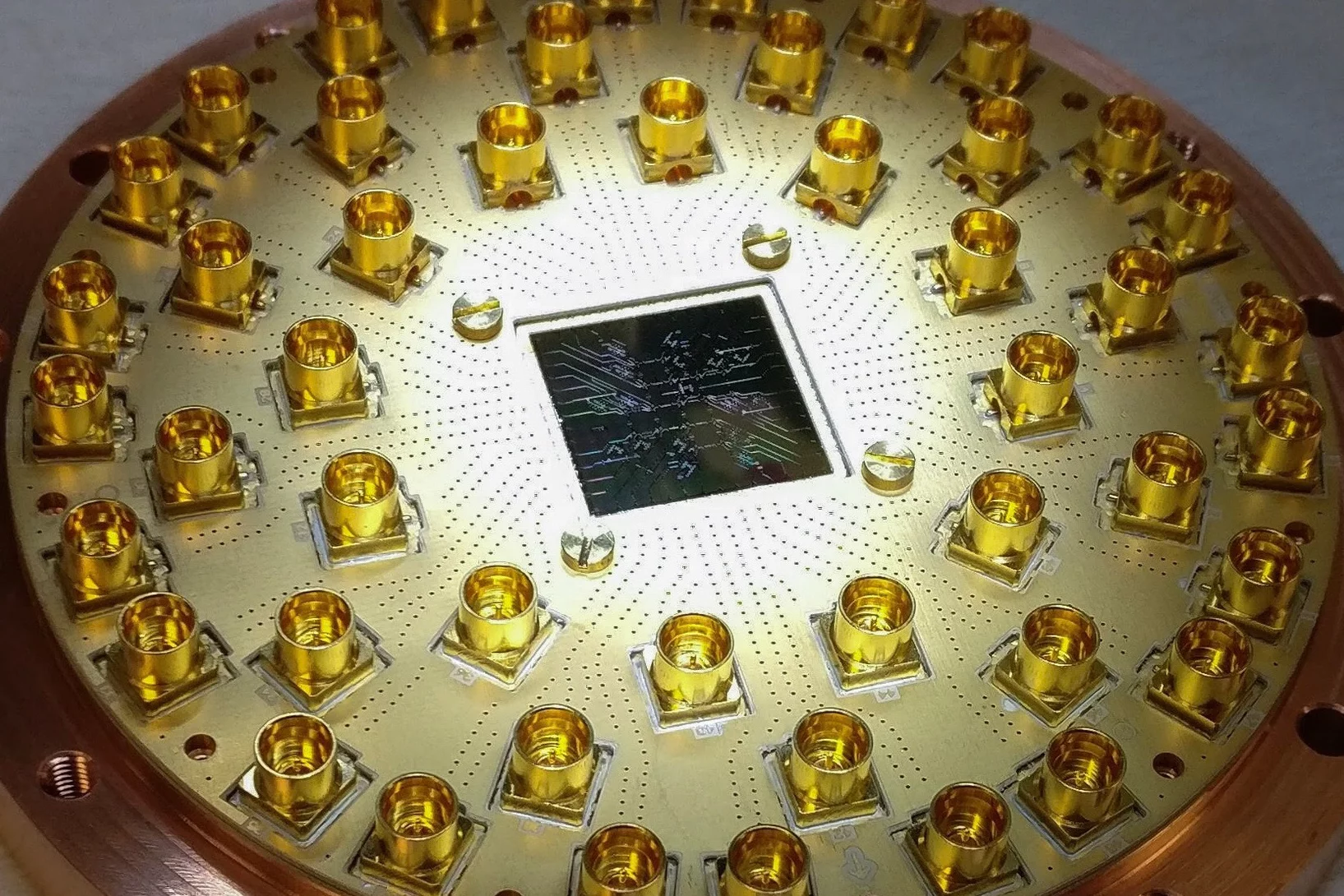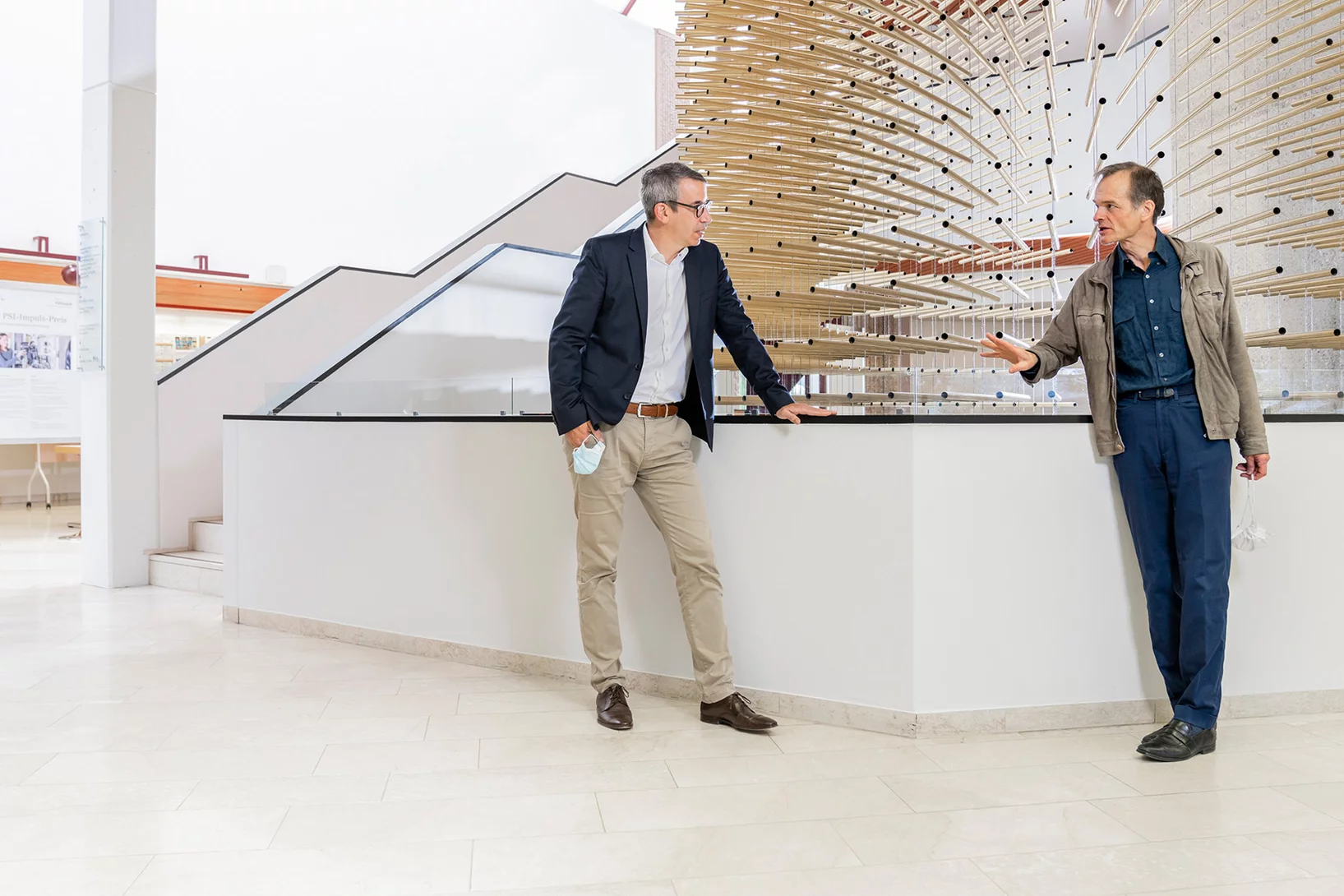The Paul Scherrer Institute, in cooperation with the Swiss Federal Institute of Technology in Lausanne EPFL, is establishing a new research division: Scientific Computing, Theory, and Data.
The Paul Scherrer Institute PSI is officially expanding its own focus areas and establishing a new research division: Scientific Computing, Theory, and Data. Here researchers will increasingly focus on the development of new computer and data technology and its use in science. The new research division is PSI's sixth, joining five previously established divisions: Biology and Chemistry; Research with Neutrons and Muons; Nuclear Energy and Safety; Energy and Environment; and Photon Science.
"Computer-aided sciences and the use of high-performance computing are anything but new at PSI," Institute Director Christian Rüegg asserts. "But now we are giving them an appropriate basis in our organisation and, with that, the possibility to take up important developments in these future-oriented topics even better than before and to work on them more intensively. Together with strong partners in the ETH Domain, we are going to expand the data sciences, the simulation of materials, and the area of artificial intelligence."
Comprehensive computer simulations, modelling, and theoretical calculations represent an essential component of the natural and engineering sciences. To constantly achieve new scientific advances, data science must also continue to develop. This is all the more true at PSI with its globally unique ensemble of large research facilities. Both their operations and the experiments that take place here produce large amounts of data: At present, around 3.6 petabytes (that is, 3.6 quadrillion bytes) of research data are generated at PSI every year. In the next four years this could grow to 50 petabytes per year, partly as a result of the upgrade which the Swiss Light Source SLS is currently undergoing.
Networked in the ETH Domain
The new research division will be composed of already existing units at EPFL and PSI as well as others that will be newly established. It will be tightly networked within the ETH Domain, which comprises the Swiss Federal Institutes of Technology and four major research institutes, as well as strategic and governing bodies. Several new joint professorships with EPFL are part of the plan. "We look forward to having our cooperation with the PSI further strengthened as a result," says EPFL President Martin Vetterli. "With this our institutions are acting jointly and with foresight, with an absolutely visionary networking of data processing and data sciences with the unique large research facilities of PSI."
Included among the existing units to be combined in the new research division are, for example, the Laboratory for Simulation and Modelling and the third site of the Swiss Data Science Centre at PSI, which complements the two locations at EPFL and ETH Zurich.
Particularly close cooperation is planned with the National Centre of Competence in Research (NCCR) MARVEL. MARVEL stands for Materials' Revolution: Computational Design and Discovery of Novel Materials. It is led by Nicola Marzari, a professor at EPFL and head of the Laboratory for Theory and Simulation of Materials, which is based there. "Through this cooperation, we can further expand Switzerland's leading international position in many future-oriented fields – including the materials sciences, energy research, chemistry, and biology – by directly linking simulations of materials and molecules with the findings of PSI's large research facilities," Marzari stresses. He will help to build up and lead a laboratory within the new research division.
High-performance computing for the digitalised research of the future
It is clear that this ambitious project will require enormous computing capacities. In this regard, too, the institutions of the ETH Domain can build on prior experience and can continue to rely on the national high-performance computing centre in Lugano, the Centro Svizzero di Calcolo Scientifico (CSCS) of ETH Zurich. In the foreseeable future, the Quantum Computing Hub, which was jointly founded by PSI and ETH Zurich this spring, is also expected to provide hardware for innovative computing.
"High-performance computers with flexible architectures are crucial for extracting the maximum of new scientific insights from the rapidly growing amounts of data produced by modern research," Rüegg is convinced.
"We look forward to new possibilities in research that large-scale simulations and the further development of artificial intelligence will bring us," Rüegg adds. "Here the ETH Domain is already very strong today, and we want to keep it that way. Overall, the new research division will contribute to expanding and securing Switzerland's international competitiveness."
Contact
Prof. Dr. Christian Rüegg
Director of the Paul Scherrer Institute
Paul Scherrer Institute, Forschungsstrasse 111, 5232 Villigen PSI, Switzerland
and Department of Physics, ETH Zurich
and Institute of Physics, EPF Lausanne
and Department of the Physics of Condensed Matter, University of Geneva
+41 56 310 47 78
christian.rueegg@psi.ch
[German, English]
EPFL Media Relations
E-mail: presse@epfl.ch
More articles on this topic
About PSI
The Paul Scherrer Institute PSI develops, builds and operates large, complex research facilities and makes them available to the national and international research community. The institute's own key research priorities are in the fields of future technologies, energy and climate, health innovation and fundamentals of nature. PSI is committed to the training of future generations. Therefore about one quarter of our staff are post-docs, post-graduates or apprentices. Altogether PSI employs 2300 people, thus being the largest research institute in Switzerland. The annual budget amounts to approximately CHF 460 million. PSI is part of the ETH Domain, with the other members being the two Swiss Federal Institutes of Technology, ETH Zurich and EPFL Lausanne, as well as Eawag (Swiss Federal Institute of Aquatic Science and Technology), Empa (Swiss Federal Laboratories for Materials Science and Technology) and WSL (Swiss Federal Institute for Forest, Snow and Landscape Research). (Last updated in June 2024)





